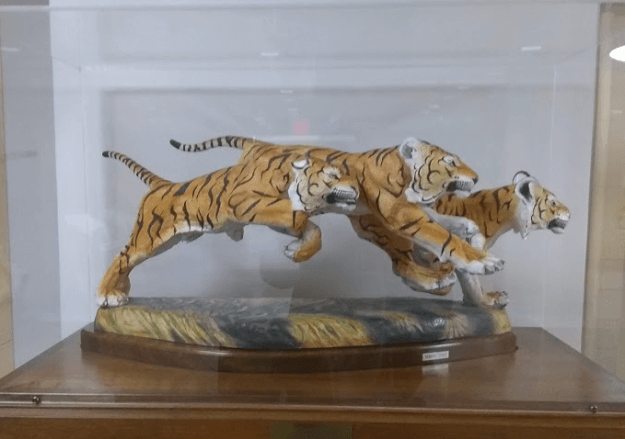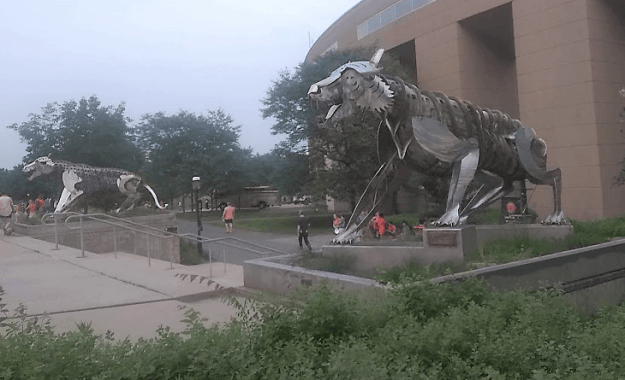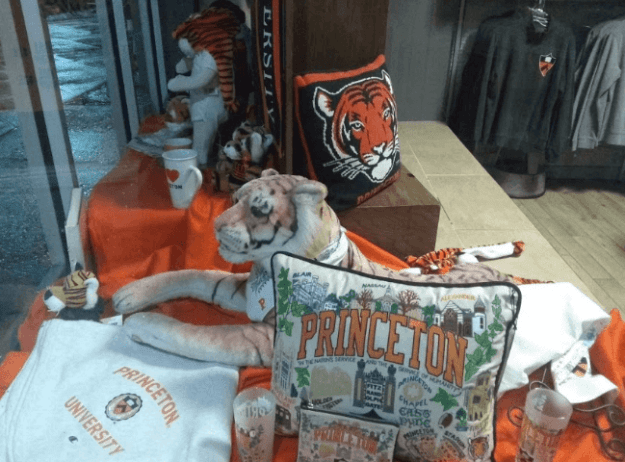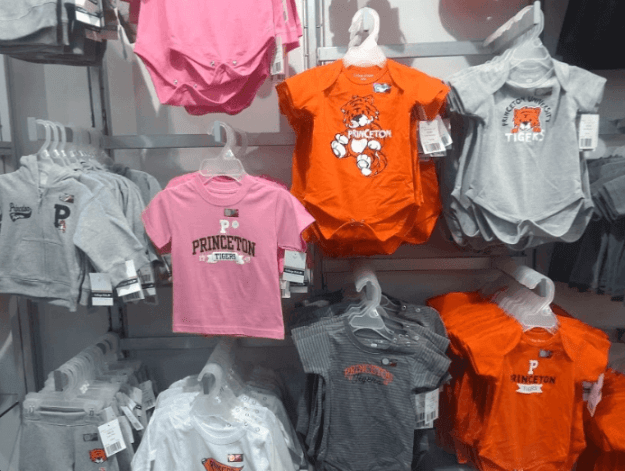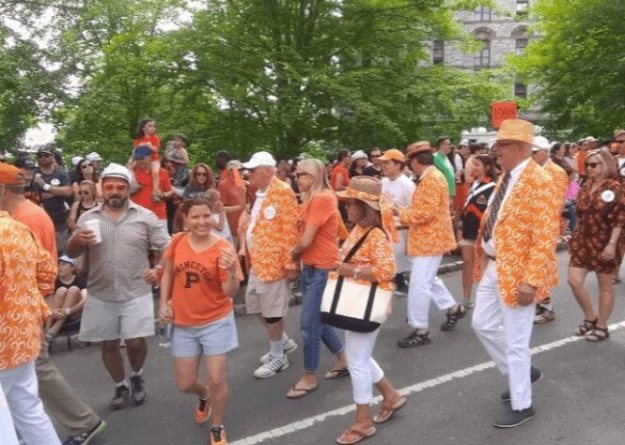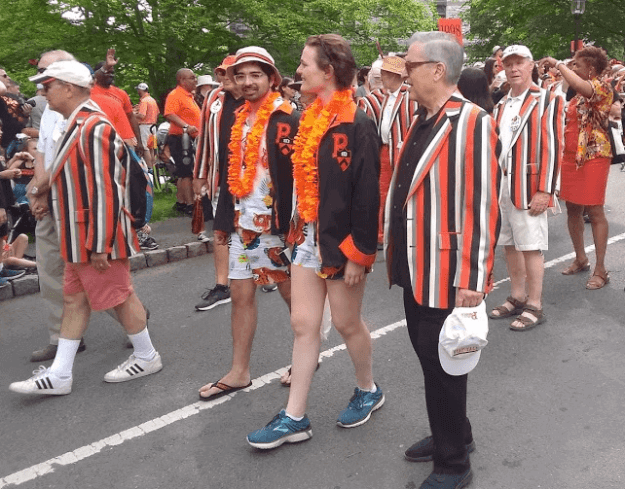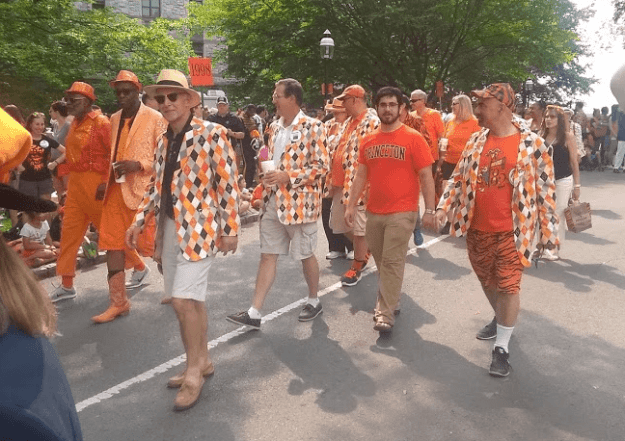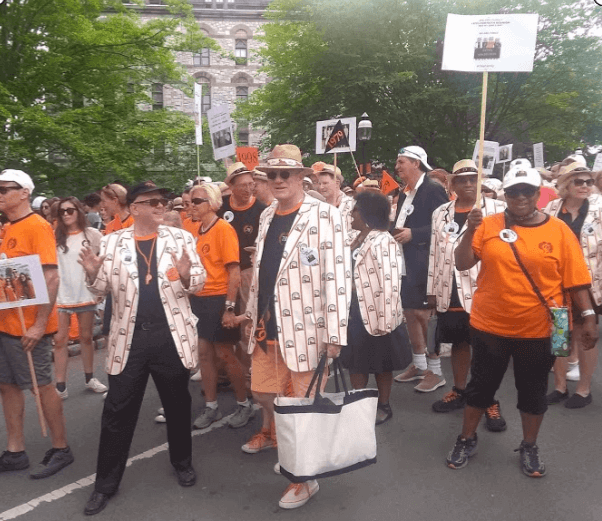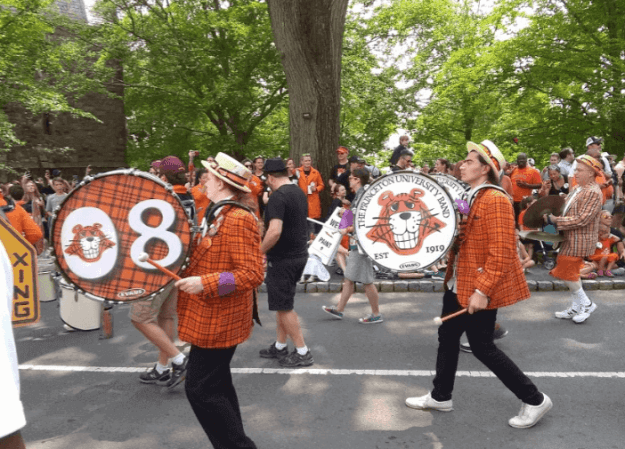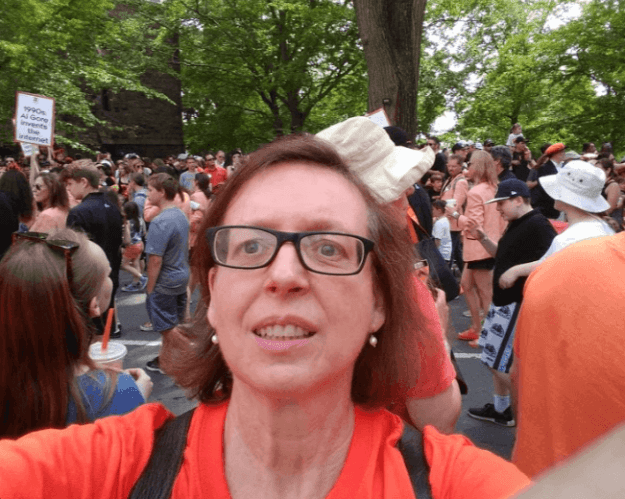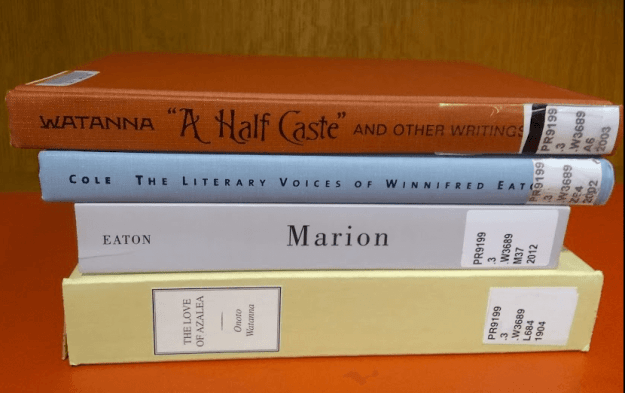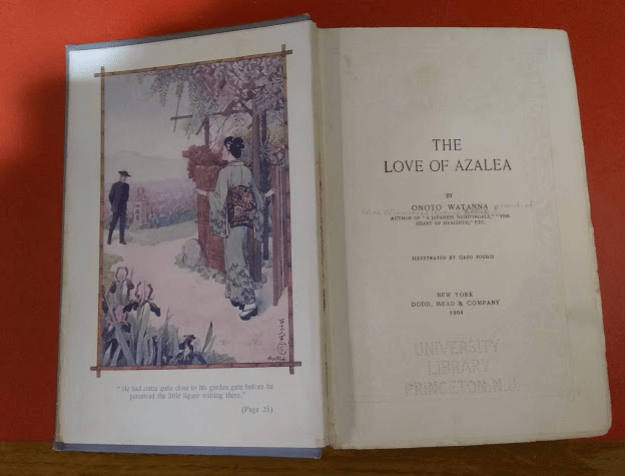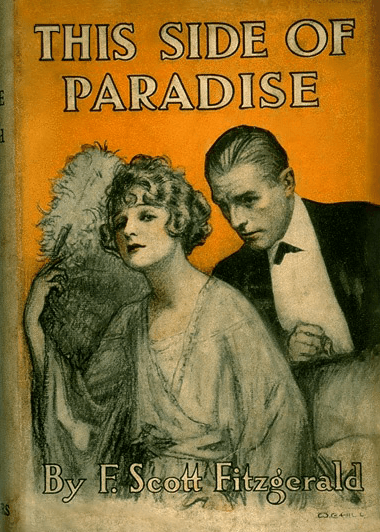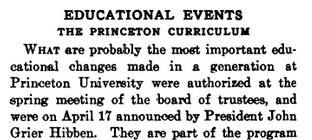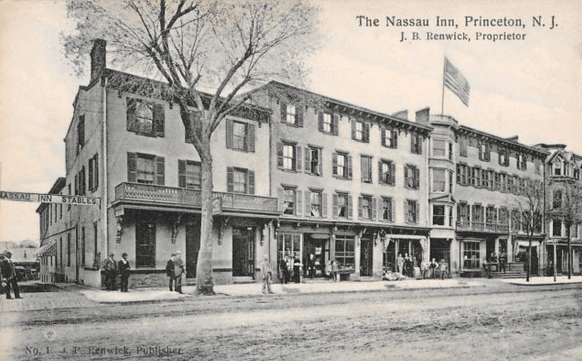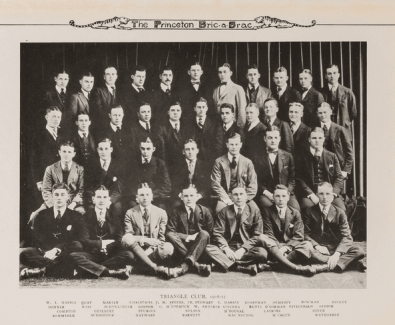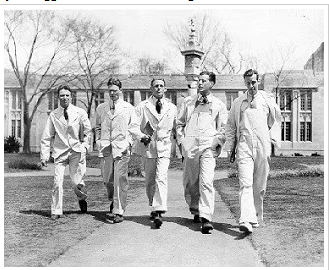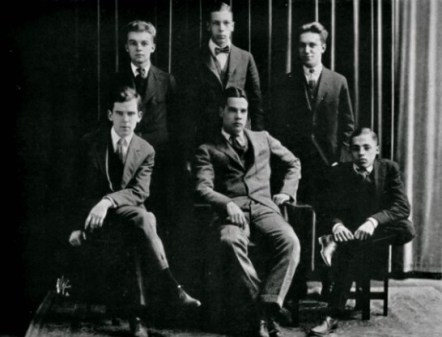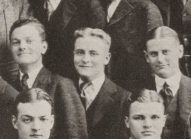I only have a sample of three to draw from,* but I doubt that there’s any college anywhere that beats Princeton, where I recently attended my 20th graduate school reunion, for school spirit.
The school mascot, the tiger, is all over town, at Firestone Library
and Palmer Stadium
and in store windows along Nassau Street.
So are the school colors, which, naturally, are orange and black. There are even teeny-tiny orange and black onesies so that you can give your baby a head start on feeling terrible if he or she applies for the Class of ’31 and, like the great majority of applicants, is rejected.**
And the jackets—
oh, the jackets!
They were everywhere, including on the Amtrak train on the way up from D.C., where I restrained myself from taking photos. Not being an undergraduate alum, I didn’t have a jacket of my own, but luckily some classmates organized a class t-shirt, which I wore with pride in the P-rade, the graduate promenade that’s the centerpiece of Princeton reunions. (That’s where the jacket photos are from.) Unfortunately you can’t see much of it in my selfie, but let the record show that I wore orange.
At this point, you may be saying, “This is very gung-ho and all, but what does it have to do with 1919?” Well, there was my trip to Firestone Library to visit some 1919-era books,
and this painting I saw at the university art museum by William-Adolphe Bouguereau, paramour and eventual husband of Elizabeth Gardner, whom I wrote about here,
and representation in the P-rade by the 100+-year-old Class of 1939.
I know–pretty slim pickings. My search for a hook continued.
I considered writing about Princeton’s early 20th-century history as “the pleasantest country club in America,” where academics took a backseat to socializing. F. Scott Fitzgerald has already covered that ground, though,
and in any case Princeton had already started to change by the time This Side of Paradise was published in 1920.
Like many other universities, Princeton transformed itself into a military training institution during World War I.
After the Armistice, it began a period of soul-searching aimed at becoming a “national university.” This led to a revamp of the curriculum that, as School and Society reported in April 1919, eliminated entry requirements, like Greek, that kept out public school students, divided the university into departments, and put Princeton on the path to becoming the first-rate institution that it is today.
Social change was slower in coming. In 1917, Grover Cleveland’s son led a boycott against Princeton’s exclusive eating clubs, but these efforts, like an earlier one by Princeton president Woodrow Wilson to abolish them altogether, had little impact.
The clubs still exist today—more egalitarian, but still controversial.
As for diversity, Princeton lagged behind other Ivy League schools for many years. I didn’t need to look up statistics; I could see it in the P-rade, where no class until the 50th reunion Class of ’69 had more than a handful of students who weren’t white.
With so many wives*** in the parade, coeducation was harder to track, but these Class of ’73 alums made sure this historic event wasn’t forgotten.
As the classes marched by, I wondered what the deal was with the jackets. Once the reunion was over, I did a Google search–and found my 100-years-ago hook. In the spring of 1912, some seniors were sitting around at the Nassau Inn,
drinking beer and sloshing it all over their spiffy college-man togs, like the suits these members of the Triangle Club are wearing. (Try to spot F. Scott Fitzgerald. If you can’t read the tiny writing under the picture, the answer is below.****)
With lots of mental energy to spare after four years of not studying very hard, the seniors turned their attention to this vexing problem. The obvious solutions, 1) dress like normal people, or 2) drink moderately enough that you don’t spill your beer, apparently weren’t on the table.
Instead, they designed an outfit consisting of denim workmen’s overalls and a jacket. The class of 1913 came up with the “beer suit” moniker, and the class of 1914 upped the fashion ante by substituting white duck for denim. When World War I came along, the suits were abandoned, such pursuits presumably deemed too frivolous during wartime, but they reappeared in 1919. The class of 1920 added a black armband to protest prohibition, and the tradition of the class logo was born. There were strict rules surrounding the jackets: they were for seniors only, and washing them was forbidden. Here are the earliest beer-suited students I could find, from the class of 1926.
The overalls were phased out after World War II, and “beer suits” became “beer jackets.” The jackets became official university attire for graduating seniors and the more dignified moniker “senior jacket” was adopted. At the 25th reunion, the senior jacket is traded in for a reunion jacket, which is worn from then on.
So a drinking hack by a small group of upper-class white men at a college that proudly called itself a country club lives on as a beloved tradition at a world-class university where white students are now in the minority.
Princeton hasn’t become a post-racial utopia, and the legacy of snobbery and hard drinking hasn’t died, but the “best old place of all” has come a long way in a hundred years.
THEN:
NOW:
*The other ones being Harvard, where I attended my undergraduate reunion last year, and NYU, where I did my MFA, but low-residency with residencies in Paris, so I didn’t have much of a chance to experience Violet Pride.
**On the bright side, his/her odds are way higher because you went there!
***Wives march alongside their husbands in the P-rade, often in outfits made of the same material as the jackets.
****Second from right, third row.


